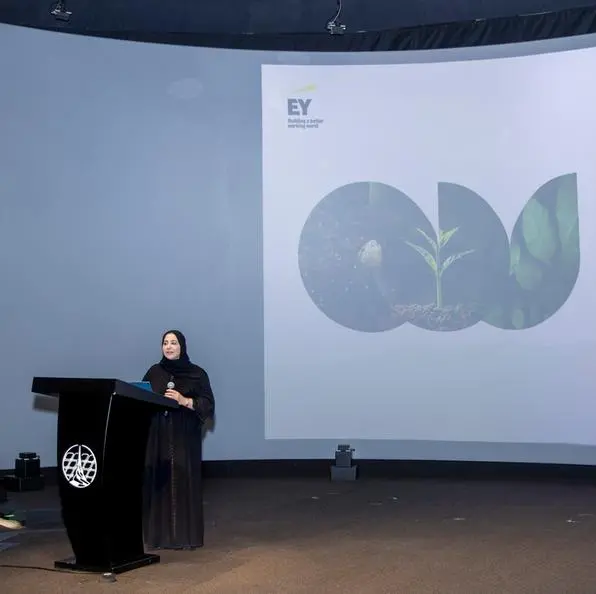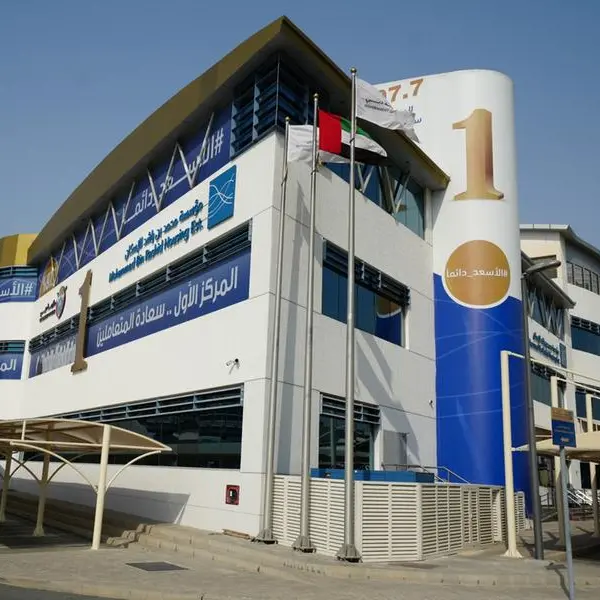On 6 August 2021, the Ministry of Health of Guinea informed WHO of a confirmed case of Marburg virus disease (MVD) in Guéckédou Prefecture, Nzérékoré Region, south-western Guinea. The village where the case resided is near both Sierra Leone and Liberian borders. This is the first known case of Marburg virus disease in Guinea and in West Africa.
The case, a male, had onset of symptoms on 25 July. On 1 August he attended a small health facility near his village of residence with symptoms of fever, headache, fatigue, abdominal pain, and gingival hemorrhage. A rapid diagnostic test for malaria was performed which was negative. The patient received supportive care with rehydration, parenteral antibiotics and treatment to manage symptoms.
On 2 August 2021, he died in the community and an alert was raised by the sub-prefecture public health care facility to the prefectorial department of health in Guéckédou. Following the alert, an investigation team comprosed of national authorities and WHO experts was deployed to conduct an in-depth investigation. The team collected a post-mortem oral swab sample, which was sent the same day to the viral haemorrhagic fever reference laboratory in Guéckédou.On 3 August a real-time PCR was conducted which confirmed the sample was positive for Marburg virus disease and negative for Ebola virus disease. On 5 August the National Reference Laboratory in Conakry provided confirmation by real-time PCR of the positive Marburg result and on 9 August Institut Pasteur Dakar in Senegal provided reconfirmation that the result was positive for Marburg virus disease and negative for Ebola virus disease.
Public health response
The Ministry of Health (MoH) together with WHO, US Centers for Disease Control and Prevention, ALIMA, Red Cross, UNICEF, The International Organization for Migration and other partners, have initiated measures to control the outbreak and prevent further spread. Contact tracing is ongoing, along with active case searching in health facilities and at the community level. Three family members and a healthcare worker were identified as high-risk close contacts and their health is being monitored.
The most recent Ebola virus disease (EVD) outbreak in Guinea was declared over on 19 June 2021 and a network of community health workers was set up as part of this recent outbreak along with a WHO technical team which has remained in country to support the government’s implementation of a post-EVD plan to enhance disease surveillance. This team has now been repurposed to support the government’s response activities to this outbreak of Marburg.
The MoH has activated the national and district emergency management committees to coordinate the response including:
- A public health emergency operations center has been activated and a base to support response workers will be set up in the sub-prefecture of Koundou.
- An in-depth epidemiological investigation is being conducted around the confirmed case to identify the source of the outbreak: to date, a total of 146 contacts were identified and as of 8 August, 145 contacts have been followed-up.
- Active searching for suspected cases in the community and health facilities is ongoing.
- A surveillance team has been deployed and briefings for health workers are underway, with particular focus on the village where the index case was identified along with villages within a 15 kilometer radius.
- Point of entry surveillance is being reinforced and two health control entry points were recently revitalized (Kiesseneye and Nongoa). The three main entry points with Sierra Leone and Liberia are active and the others are under evaluation.
- In collaboration with ALIMA, there is an ongoing assessment of the case management capacity in the health facilities.
- Risk communication activities are ongoing in the community.
- Infection prevention and control activities (IPC) are ongoing and briefing sessions are being conducted on IPC and water and sanitation hygiene (WASH) standards in Koundou health center, along with information sessions for the population of Temessadou Mboket village volunteers on safe and dignified burials
WHO risk assessment
Marburg virus disease (MVD) is a highly virulent, epidemic-prone disease associated with high case fatality rates (CFR 24-90%). In the early course of the disease, clinical diagnosis of MVD is difficult to distinguish from other tropical febrile illnesses, because of the similarities in the clinical symptoms. Differential diagnoses to be excluded include, Ebola virus disease, as well as malaria, typhoid fever, leptospirosis, rickettsial infection, and plague. MVD is transmitted by direct contact with the blood, bodily fluids and/or tissues of infected persons or wild animals (e.g. monkeys and fruit bats).
Currently, there is no specific therapeutic or drug approved for MVD. Nevertheless, supportive care including: close monitoring of vital signs, fluid resuscitation, electrolyte and acid base monitoring along with management of co-infections and organ dysfunction, are critical components of care and optimize patient outcomes and survival. Some monoclonal antibodies (Mabs) are under development and other antivirals are being explored for MVD (e.g. Galidesvir, Favipiravir, Remdesivir) as part of clinical trials, but without clear results in the current moment more evidence and further studies are required. However, these should only be used as part of a randomized controlled trial.
As of 7 August, only one case has been confirmed and all four identified high-risk close contacts are asymptomatic. Investigations are ongoing to identify the source of the infection and additional contacts of the index case.
Guinea has previous experience in managing recurring viral hemorrhagic diseases such as EVD and Lassa fever, but this is the first time that MVD has been reported. The country has a fragile healthcare system which is further exacerbated by multiple disease outbreaks, recurrent epidemics and the COVID-19 pandemic. The response activities to recent outbreaks such as EVD, COVID-19 and Lassa fever likely contributed to early detection and response to Marburg Virus Disease in Guinea.
Guinea’s health authorities have responded rapidly to this event, and measures are being quickly implemented to control the outbreak. The affected village is in a remote forested area located near the border with Sierra Leone and Liberia. Cross-border population movement and community mixing between Guinea and neighboring Sierra Leone and Liberia may increase the risk of cross-border spread and as such, the Ministry of Health and Sanitation has proactively assessed the situation together with stakeholders and the district health leadership in Kono and Kailahun districts of Sierra Leone have been alerted. Health authorities in Sierra Leone and Liberia have activated contingency plans and have started public health measures at the points of entry with Guinea. Additionally the potential transmission of the virus between bat colonies and humans also pose an increased risk for cross-border spread.
These factors suggest a high risk at the national level, requiring an immediate and coordinated response with support from international partners. The risk at the regional level is high, based on the fact that the Guéckédou prefecture is well connected to Liberia and Sierra Leone, although authorities are already taking action. The risk associated with the event at the global level is low.
WHO advice
Human-to-human transmission of Marburg virus is primarily associated with direct contact with blood and/or bodily fluids of infected persons. Transmission associated with the provision of healthcare has been reported when appropriate infection control measures are not in place.
Health workers should always implement standard precautions when caring for any patient, regardless of their presumed diagnosis. These include hand hygiene, respiratory hygiene and cough etiquette, use of risk based personal protective equipment (PPE), safe injection practices, environmental cleaning and disinfection, appropriate linen and waste management, and decontamination of reusable medical equipment.
Other key IPC measures to prevent healthcare associated infections include early recognition (screening, triage) along with isolation and monitoring of suspected cases, investigation of health workers exposed to Marburg cases, in-patient surveillance for Marburg cases, and safe and dignified burial practices in community settings.
Health workers caring for patients with suspected or confirmed Marburg virus should apply additional precautionary infection control measures to prevent contact with the patient’s body fluids and/or contaminated surfaces. This includes the following PPE items: face protection (a face shield or a medical mask and goggles), a clean, non-sterile long-sleeved gown, and gloves. This further emphasizes the importance of readily available PPE at health care facilities, appropriate donning/doffing areas, IPC/WASH supplies and training on their proper uses.
Laboratory workers are also at risk. Samples taken from humans and animals for investigation of Marburg infection should be handled by trained staff and processed in suitably equipped laboratories.
Surveillance activities, including contact tracing and active case searching, must be strengthened within all affected health zones. Thus, it is recommended that neighboring countries heighten their surveillance for Viral Hemorrhagic Fever (VHF) in border communities and health facilities as well as strengthening community engagement on alert reporting and preventive measures.
Risk communication and community engagement (RCCE) is key to successfully controlling outbreaks. Raising awareness of the risk factors for Marburg infection and the protective measures individuals can take to reduce human exposure to the virus are important to reducing infections and deaths. Key public health communication messages to be provided to the affected communities include the following:
- How to reduce the risk of transmission in the community arising from direct or close contact with infected patients, particularly with their bodily fluids. Close physical contact with Marburg patients should be avoided. Any suspected case, ill at home should not be managed at home, but instead immediately transferred to a health facility for treatment and isolation; during this transfer appropriate personal protective equipment should be worn. Regular hand hygiene should be performed after visiting anyone who is sick.
- Leaders and health workers in communities affected by Marburg, should make efforts to ensure that the population is well informed. This refers to informing the community of both the nature of the disease, to avoid further transmission, community stigmatization and encourage early presentation to treatment centers and other necessary outbreak containment measures, including safe burial of the dead. People who have died from Marburg should be promptly and safely buried.
To reduce the risk of wildlife-to-human transmission, such as through contact with fruit bats, monkeys, and apes, the following advice should be communicated:
- Handle wildlife in conjunction with regular hand hygiene and where possible with gloves and other appropriate protective clothing.
- Cook animal products (blood and meat) thoroughly before consumption and avoid consumption of raw meat.
- During work or research activities or tourist visits in mines or caves inhabited by fruit bat colonies, people should wear masks and gloves.
Based on the current risk assessment and prior evidence on Ebola outbreaks, WHO advises against any restriction of travel and trade to and from Guinea.
Further information
- Marburg fact sheet (in 6 UN languages)
- Marburg virus disease health topic
- Interim version 1.2, Ebola and Marburg virus disease epidemics: preparedness, alert, control, and evaluation
- How to conduct safe and dignified burial of a patient who has died from suspected or confirmed Ebola virus disease
- Case definition recommendations for Ebola or Marburg virus diseases
- Optimized supportive care for Ebola virus disease
© Press Release 2021
Disclaimer: The contents of this press release was provided from an external third party provider. This website is not responsible for, and does not control, such external content. This content is provided on an “as is” and “as available” basis and has not been edited in any way. Neither this website nor our affiliates guarantee the accuracy of or endorse the views or opinions expressed in this press release.
The press release is provided for informational purposes only. The content does not provide tax, legal or investment advice or opinion regarding the suitability, value or profitability of any particular security, portfolio or investment strategy. Neither this website nor our affiliates shall be liable for any errors or inaccuracies in the content, or for any actions taken by you in reliance thereon. You expressly agree that your use of the information within this article is at your sole risk.
To the fullest extent permitted by applicable law, this website, its parent company, its subsidiaries, its affiliates and the respective shareholders, directors, officers, employees, agents, advertisers, content providers and licensors will not be liable (jointly or severally) to you for any direct, indirect, consequential, special, incidental, punitive or exemplary damages, including without limitation, lost profits, lost savings and lost revenues, whether in negligence, tort, contract or any other theory of liability, even if the parties have been advised of the possibility or could have foreseen any such damages.


















